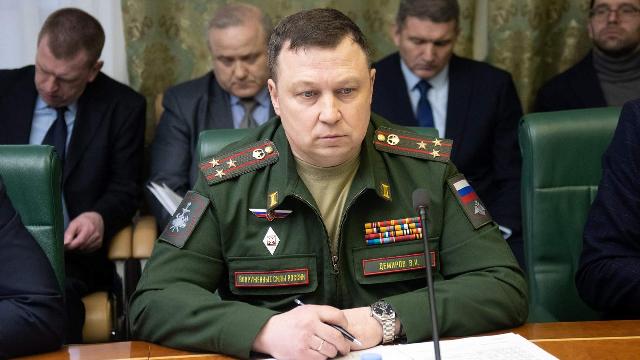Vladimir Demirov, Head of the Department of Resource Support of the Ministry of Defense of the Russian Federation, talks about how the experience of a special operation changed the tactics of supplying troops with fuel.
Buggies and armored tankers based on the Ural began to be used to supply troops with fuel on the line of contact. This technique is equipped with electronic warfare equipment that protects against UAV attacks. Colonel Vladimir Demirov, head of the Department (rocket Fuel and Fuel) of the Department of Resource Support of the Russian Defense Ministry, told Izvestia in an exclusive interview about why storage facilities for gasoline and diesel fuel made of polymer materials are needed at the front, why fuel pipelines are being built, and also about the great importance of small containers on the front line.
"A high-speed buggy with a trailer accepts the challenge"
— Vladimir Ivanovich, in Afghanistan, Chechnya and now in Ukraine, fuel trucks and bases of fuel and lubricants are priority targets for the enemy. How is the fuel supply to the front going now?
— The fuel supply scheme for troops is a multi-stage transfer of fuel: from the supplier to secure warehouses, from warehouses to operational transport, from operational transport to military, from military to units. The volume of fuel transferred is dispersed at each stage, and the capacity of the delivery transport is reduced down to small, high-passable, protected tankers. Every day, fuel service specialists travel hundreds of kilometers under the constant attention of enemy intelligence, drone attacks, artillery strikes and precision weapons.
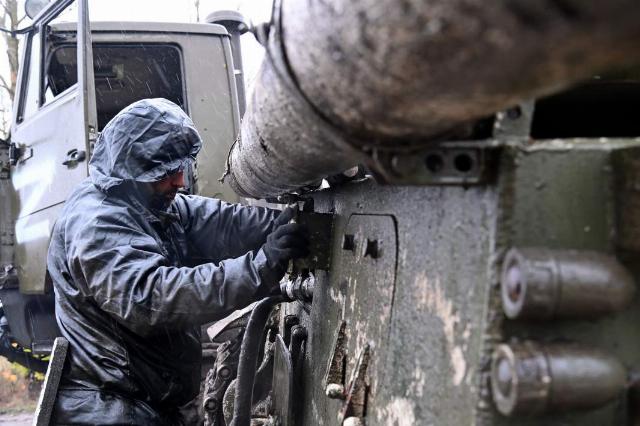
Photo: RIA Novosti/Victor Antonyuk
Image source: iz.ru
— How did the appearance of drones, cluster munitions, HIMARS and Storm Shadow long-range missiles, ATACMS affect the work of the fuel and lubricants troops? How have the delivery schemes and tactics changed?
— In an attempt to restrain the advance of our troops, the enemy is actively seeking to influence the facilities of the country's fuel and energy complex. In particular, for automobile tankers and field fuel depots. Of course, this affects the amount of tasks performed by military units and fuel service units. It has become bigger accordingly. Experience has also shown that it is more expedient to use low-tonnage automobile tankers to refuel weapons and military equipment at the forefront.
— What kind of equipment appeared in the course of its logistics support units (MTO)?
— The experience of the ongoing special military operation has dictated new requirements for transportation. Undoubtedly, armored tankers are the key to preserving the life and health of personnel. Therefore, as a result of joint work with industrial enterprises, a new protected tanker model was developed — this is the ATZ-8 based on the Ural automobile. It is able to withstand direct fire from small arms, as well as save people and fuel from MLRS fragments.
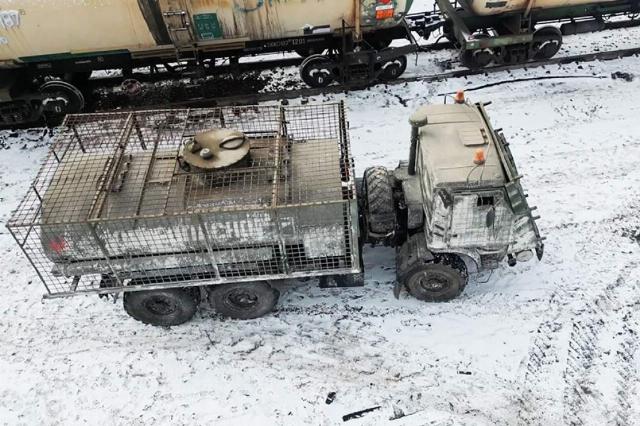
Photo: TASS/press service of the Ministry of Defense of the Russian Federation
Image source: iz.ru
— What other cars are used for refueling?
— ATZ-1.5-236022 tankers with a capacity of 1.5 cubic meters are also widely used in the military, capable of covertly and promptly refueling up to three units of weapons and military equipment. This model has proven itself positively due to such characteristics as maneuverability, small size and stealth. In addition, support units also use adapted refueling facilities, such as buggies. Where even a small one-and-a-half-cubic tanker truck cannot pass, a high-speed buggy with a trailer accepts the challenge, from the capacity of which several cars can be secretly and quickly refueled at once.
"Improvised means are also used — logs, barbecues, camouflage tents"
— Do drones pose a big problem for supply units now? How do you deal with them, how do you cover warehouses, equipment on the march and at gas stations?
— We place vehicles for refueling and transporting fuel with military supplies at a safe distance from the line of contact, out of range of enemy fire weapons. Directly at the front line, fuel reserves are contained in small containers to ensure mobility and safety. Fuel transportation is carried out in compliance with the secrecy and disguise regime using non-standard technical means. We also organize cooperation with special services responsible for the protection, security and defense of fuel transportation. And we will equip the tankers of the leading edge with means of detection and electronic warfare from the effects of enemy UAVs.
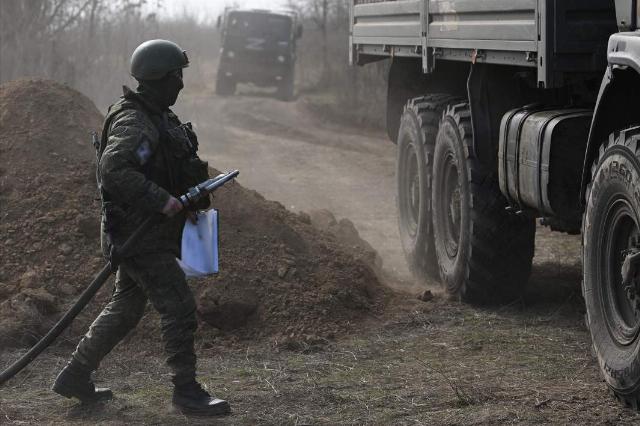
Photo: RIA Novosti/Alexey Maishev
Image source: iz.ru
— Have MTO fuel trucks received so-called barbecues and other drone protection? Do they have any special features?
— For transportation vehicles, the method of protection is always individual and is applied depending on the nature of warfare and terrain conditions. But one of the features is the protection of the fuel tank, damage to which can lead to irreversible consequences. To achieve this goal, they are equipped with additional protection made of polymer or metal materials both in the factory and in the field. Based on the experience of the personnel, improvised means such as logs, barbecues, camouflage tents are also additionally used. All this is aimed at preserving the cargo, which cannot be allowed to ignite in any way.
— How have mobile field fuel depots with polymer tanks performed? How are they better than the metal tanks and tanks that were used before?
— Today, elastic tanks made of polymer materials are increasingly used in field depots for the accumulation, reception and delivery of fuel by troops. Their mobility, the ability to maneuver fuel reserves without unmasking them, and ease of use have already proven their effectiveness. To ensure and work with them, special units have been created as part of the logistics teams, equipped with mobile warehouse sets with a capacity of 1,200 cubic meters each. The personnel of the field fuel depots pay special attention to disguising the warehouse facilities, as well as protecting them from enemy air attacks.
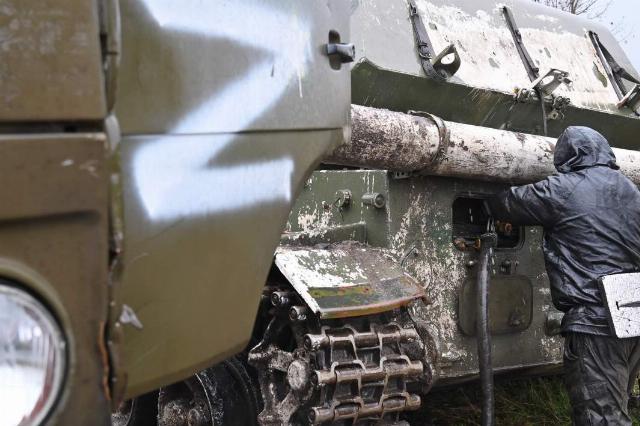
Photo: RIA Novosti/Victor Antonyuk
Image source: iz.ru
— Are fuel lines used to deliver fuel to combat areas? What tasks do they help to solve?
— The experience of the SVO has once again proved that the use of pipeline transport is most effective for supplying fuel to troops in hard-to-reach areas, as well as in conditions of constant enemy influence on other modes of transport. Pipeline units were repeatedly used to supply fuel to troops on the right bank of the Dnieper River, when supplying fuel to field depots and airfields. The secrecy and maneuverability of the field pipelines made it possible to deliver more than one thousand tons of fuel per day to the troops in a timely manner. The use of flat-turn pipelines made of polymer materials, developed by order of the rocket fuel and fuel management, made it possible to overcome the water barrier and pump fuel without technological losses.
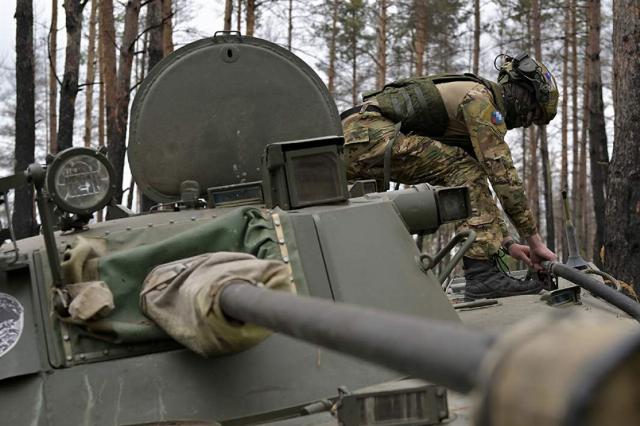
Photo: RIA Novosti/Evgeny Biyatov
Image source: iz.ru
— How is the quality of fuel supplied to the troops checked?
— Fuel tests for compliance with quality requirements are carried out at each stage of acceptance and transfer, including using field fuel laboratories accepted for supply in 2024. During the production process at oil refineries, quality control is carried out by military missions. Upon acceptance of incoming fuels and lubricants from manufacturing enterprises, accredited fuel laboratories equipped with modern equipment that allows testing for the entire established list of quality indicators. The inspection control of fuel quality in the troops is also carried out by the mobile mobile fuel laboratory from the 25th State Research Institute of Chemical Pathology of the Russian Ministry of Defense.
— In winter, most fuels and lubricants thicken, change their properties, and diesel fuel can freeze. Tell us about the specifics of winter work.
— Winter grade fuels and lubricants are used in the autumn and winter period. Low-freezing coolants are accumulated in warehouses. Special attention is paid to the provision of oils and lubricants when transferring weapons and military equipment to seasonal operating modes, during which oils and special liquids are changed to ensure high-quality and trouble-free combat operation of equipment.
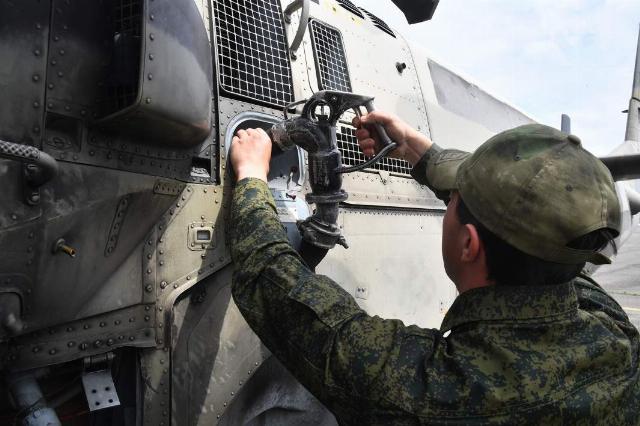
Photo: RIA Novosti
Image Source: iz.ru
— In the reports of the Ministry of Defense of the Russian Federation, we constantly see the names of fighters who completed the task, risking their lives. What kind of combat work is associated with the greatest risks? Have many soldiers and MTO commanders received awards during their military service?
— The personnel of the fuel service, daily supplying troops with fuel, risking their lives, successfully performs the most important maintenance tasks, bringing the achievement of the goals of a special military operation closer. Among them, more than 300 soldiers and officers were awarded Orders of Courage alone.
Izvestia reference
February 17 is the Fuel Service Day of the Armed Forces of the Russian Federation. This is one of the youngest home front services of the Russian Armed Forces. The main and most important task of this service is considered to be the supply of fuel and lubricants (fuels and lubricants) and rocket fuel to the troops, ensuring the functioning of military equipment and weapons both in peacetime and in combat conditions.
Its history began on February 17, 1936, when, by order of the People's Commissar of Defense of the USSR No. 024, the fuel supply department was established. It was signed by People's Commissar of Defense Kliment Voroshilov. The first serious test of the readiness of the fuel service was the provision of fuel for the fighting near Lake Hassan — in two weeks, the troops consumed more than 8 thousand tons of fuel. During the Great Patriotic War, the Red Army and Navy consumed over 16 million tons of various types of fuel, and the personnel of the fuel service worked under the mobilizing motto "Fuel to the front!" To solve the problem of fuel supply to besieged Leningrad, a pipeline was laid along the bottom of Lake Ladoga in record time. In 2010, the formation, formation and development of the fuel service as a unified logistics system (MTO) began. Today, the fuel service solves the tasks of storing and transporting fuel by land, sea and air.
Vladimir Matveev
Bogdan Stepovoy
